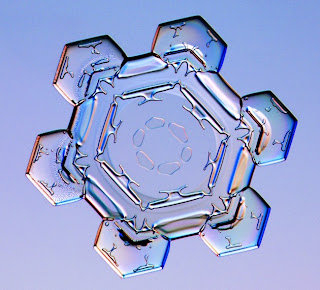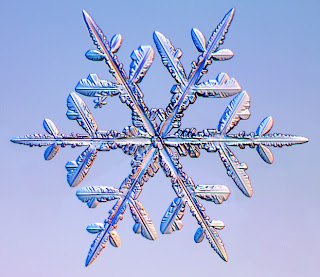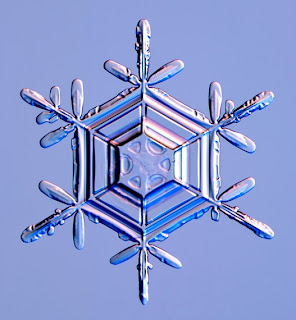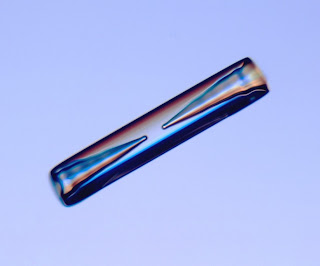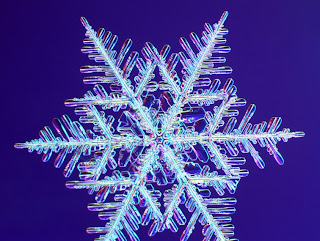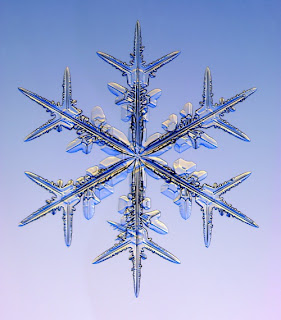The LG-GD910 is scheduled for an official debut at CES in January. European and Korean customers will have the first opportunity to purchase the new wrist phones, although pricing has not yet been announced.
[Akihabara News]


The LG-GD910 is scheduled for an official debut at CES in January. European and Korean customers will have the first opportunity to purchase the new wrist phones, although pricing has not yet been announced.
[Akihabara News]





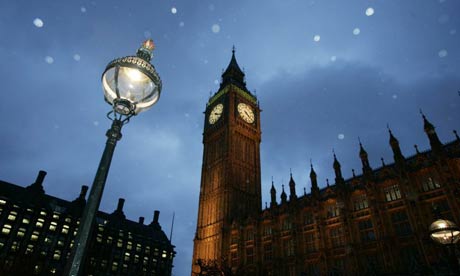
The Pogo Sketch, cast in aluminum and made with an anodized silver finish, lets you use your MacBook's trackpad as you would a pen tablet—enabling you to sketch and illustrate in drawing programs and artistic applications more naturally and accurately than you could with your finger alone.
The Pogo Sketch features a tip that "acts as a bridge by transferring the signal from the display to the user’s hand," according to the manufacturer.
The Pogo Sketch also works with the iPhone and iPod touch.
San Francisco - It's hard to be a geek at Christmastime. Sure, there are lots of cool tech toys and gadgets on display on store shelves, and a few may have landed under your tree this year. Perhaps Absolutely Mad: 50 Years of Mad Magazine on DVD, a Microsoft Xbox 360, an Apple MacBook Pro 2008 edition, a Garmin Nuvi 880, and one or more of the hot smartphones: the Apple iPhone 3G, the Palm Treo Pro, the RIM BlackBerry Storm, or the T-Mobile G1.
But it takes a geek to know what a true geek really wants, and chances are your friends and family aren't all that geeky.
So which true-geek items might they have given you? InfoWorld's band of mad scientists -- a motley crew of software, networking, datacenter, and hardware experts that habituates the InfoWorld Test Center -- offers recommendations on what they lust after ??? and know their fellow geeks do, too. Christmas may be over, but you can still give the gift of geek tech to yourself
[ Watch our geek gift guide slideshow. | Looking for a high-tech collectible? Peruse David Margulius' collectible tech gift guide. | Curious about last year's geek gift guide recommendations? Check them out! ]
In alphabetical order, here are our top 10 picks:
* Apple Time Capsule
* Botanicalls DIY Plant Twitter Kit
* Cathode Corner Nixie Watch
* EVGA GTX 200 Waterblock
* Eye-Fi Explore
* 4th Motion Gyroxus Full-Motion Game Chair
* MvixUSA MvixBox
* Sky Factory SkyV
* SRS Labs iWow for iPod Adapter
* Yoggie Gatekeeper Pico
And delve into our guide to collectible tech.
OK, we know you also really want a new mobile. If you didn't get one for the holidays, get the scoop on InfoWorld Test Center's top mobile picks.
Shipments of notebook PCs surged nearly 40 percent to 38.6 million units, while desktop shipments fell 1.3 percent to 38.5 million.
Overall, PC shipments rose 15.4 percent in the quarter to 79 million units.
Acer Inc shipped almost 3 million more notebooks in the third quarter than in the previous quarter, with the majority being netbooks, iSuppli said. The Taiwanese company is now the third largest PC company by market share at 12.2 percent, less than two percentage points behind second-place Dell Inc.
Hewlett-Packard Co maintained its lead at No. 1, shipping 14.9 million units for an 18.8 percent market share.
Apple Inc lost nearly half a point of market share from the second quarter. The company's 3.2 percent share places it seventh overall in total shipments.
ISuppli raised slightly its 2008 unit growth forecast. It now expects 13 percent growth this year, up from its previous 12.5 percent forecast.
For 2009, the group expects unit growth of 4.3 percent.
BOSTON (Reuters) - Research In Motion Ltd is suing Motorola Inc, alleging that the mobile phone company improperly blocked the BlackBerry maker from hiring current and laid-off Motorola employees.
The suit, filed in state court in Chicago on Tuesday, comes three months after Motorola alleged that RIM violated an agreement reached in February that the two companies would not solicit each other's employees.
RIM asked for a court order to invalidate the agreement, saying in its complaint that the pact had expired in August and was no longer enforceable.
The Canadian company is also seeking unspecified damages for what it called "unfair competition" practices by Motorola.
Motorola spokeswoman Jennifer Weyrauch-Erickson declined to comment on the lawsuit.
"RIM entities continue to grow and hire new employees within the United States and globally against a backdrop of recent public announcements by Motorola that it has and will continue to make massive layoffs," said RIM's lawsuit.
In the lawsuit filed by Motorola on September 4, the Schaumburg, Illinois-based company asked a judge to bar RIM from using Motorola's confidential information, or soliciting or hiring any Motorola employees.
RIM officials could not be reached for comment.
The lawsuit, Research in Motion Corp vs Motorola Inc, was filed in the Circuit Court of Cook County, Illinois, Chancery Division, Case Number 717-200S.
Random House recently announced it was adding thousands of books to its digital catalog and has said that e-sales more than tripled in 2008, although the electronic market remains a tiny part of the overall book market.
Several other publishers, including Simon & Schuster and HarperCollins, have been making e-books available on iPhones.
 TOKYO (AFP) - Nintendo Co. said Thursday it will start offering videos through its blockbuster Wii game console, the latest new feature for the Japanese entertainment giant.
TOKYO (AFP) - Nintendo Co. said Thursday it will start offering videos through its blockbuster Wii game console, the latest new feature for the Japanese entertainment giant. Nintendo said it would develop original programming which Wii users could access via the Internet and watch on their television. It is considering videos for both free and fees.
The game giant teamed up with Japan's leading advertising firm Dentsu Inc. to develop the service, which will begin in Japan next year, with an eye on future expansion into foreign markets.
Japanese rival Sony Corp. has already started using its popular PlayStation series for online movie sales and advertising by placing corporate messages inside games, which often have highly niche audiences.
One prominent advertiser was US president-elect Barack Obama, who placed campaign commercials inside a video game produced by Electronic Arts for Microsoft's XBox 360 console.
Nintendo and Dentsu said they were soliciting businesses to take part in the project to develop original Wii videos.
"Nintendo and Dentsu shall use the environment surrounding the Wii so that living rooms with Wii-ready TVs would become more of a fun area for communication among families and friends," the firms said in a joint statement.
Nintendo has shipped 34.55 million Wii consoles around the world, 80 percent of which are sitting near televisions in living rooms, the company said, adding that 40 percent of Wii consoles are linked to the Internet.
The Wii, launched ahead of the holiday season in 2006, is known for its innovative motion-sensitive controller which has appealed to people buying a video-game machine for the first time.
Nintendo already enables Wii players to use the game consoles to surf the Internet, shop online, organise digital photos and to communicate with Wii-using friends.
Nintendo in November launched in Japan the DSi, which comes with a built-in camera that lets allows the user to alter people's facial expressions.

A small Indiana company has sued tech heavyweights Microsoft, Apple, and Google, claiming that it holds the patent on a common file preview feature used by browsers and operating systems to show users small snapshots of the files before they are opened.
Cygnus Systems sued the three companies on Wednesday saying that they infringed on its patent with products such as Windows Vista, Internet Explorer 8 and Google Chrome, which allow users to view preview images of documents on the computer. Mac OS X, the iPhone and Safari also infringe, the company said in court filings. Apple uses this technology in its Finder and Cover Flow Mac OS X features, the filings state.
While Cygnus has sued three very high profile companies, there may not be the only vendors in Cygnus's sites. "They were a logical starting place for us," said Matt McAndrews, a partner with the Niro, Scavone, Haller & Niro, law firm, which is representing Cygnus. "We've identified many other potentially infringing products that we're investigating," he added.
Cygnus's owner and president Gregory Swartz developed the technology laid out in the patent while working on IT consulting projects, McAndrews said. The company is looking for "a reasonable royalty" as well as a court injunction preventing further infringement, he said.
The lawsuit was filed in federal court in Arizona, where Swartz resides, McAndrews said.
Google, Microsoft and Apple did not return messages seeking comment on the lawsuit.
Cygnus applied for its patent (# 7346850) in 2001. It covers a "System and method for iconic software environment management" and was granted by the U.S. Patent and Trademark Office in March of this year.

Qian Feng Xu and Jian Nong Wang

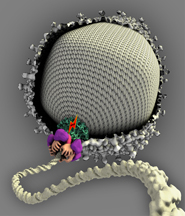 |
The researchers, from Purdue University and The Catholic University of America, also have proposed a mechanism for how the motor works. Parts of the motor move in sequence like the pistons in a car's engine, progressively drawing the genetic material into the virus's head, or capsid, said Michael Rossmann, Purdue's Hanley Distinguished Professor of Biological Sciences.
The motor is needed to insert DNA into the capsid of the T4 virus, which is called a bacteriophage because it infects bacteria. The same kind of motor, however, also is likely present in other viruses, including the human herpes virus.
"Molecular motors in double-stranded DNA viruses have never been shown in such detail before," said Siyang Sun, a postdoctoral research associate working in Rossmann's lab.
Findings are detailed in a paper appearing online on Dec. 24 in the journal Cell. The lead authors are Sun and Kiran Kondabagil, a research assistant professor at Catholic University of America working with biology professor Venigalla B. Rao.
"This research is allowing us to examine the inner workings of a virus packaging motor at the atomic level," Rao said. "This particular motor is very fast and powerful."
Other researchers have determined that the T4 molecular motor is the strongest yet discovered in viruses and proportionately twice as powerful as an automotive engine. The motors generate 20 times the force produced by the protein myosin, one of the two proteins responsible for the contraction and strength of muscles.
The virus consists of a head and tail portion. The DNA-packaging motor is located in the same place where the tail eventually connects to the head. Most of the motor falls off after the packaging step is completed, allowing the tail to attach to the capsid. The DNA is a complete record of a virus's properties, and the capsid protects this record from damage and ensures that the virus can reproduce by infecting a host organism.
Sun determined that the packaging motor is made of two ringlike structures, and both of these discs contain five segments made of a protein called gp17, for gene product 17. The researchers determined the atomic structure of these protein segments using a procedure called X-ray crystallography. They also used another technique called cryo-electron microscopy, which enabled them to see a more distant, overall design of the motor's ringlike structure.
One disc sits on top of the other, and each of the five segments of the top disc shares a gp17 protein with a corresponding segment in the bottom disc. The gp17 proteins have two segments, or domains, one segment in the lower disc and the other segment in the upper disc.
The lower disc first attaches to the DNA and is then drawn upward by the upper disc, pushing the DNA into the virus's capsid in the process. The top disc of the motor pulls the lower disc upward using electrostatic forces generated between oppositely charged objects, Rossmann said.
"These findings determined the relationship between the motor and DNA," Rossmann said.
The research data also showed that the motor is dynamic and apparently exists in two states: relaxed and tensed, the latter likely occurring when the top disk has attracted the lower disc.
Researchers at Catholic University of America supplied the gp17 and other materials, and the Purdue researchers studied the structure of the materials.
"By combining the structural data and the biochemical data of our colleagues at the Catholic University of America, we were jointly able to come up with a hypothesis of how this motor works," Rossmann said.
Because herpes and other viruses contain similar DNA packaging motors, such findings could someday help scientists design drugs that would interfere with the function of these motors and mitigate the result of some viral infections. The findings also could have other future applications, such as developing alternatives to current antibiotics, creating methods to deliver genetic material to patients for gene therapy or creating tiny "nanomotors" in future machines.
"But this is very basic research, and it's far too soon to talk more about possible practical applications of this knowledge," Rossmann said.
The research paper was written by Sun; Kondabagil; Bonnie Draper and Tanfis I. Alam, both postdoctoral fellows at CUA; Purdue electron microscopist Valorie D. Bowman; Zhihong Zhang, a CUA graduate research assistant; CUA graduate student Shylaja Hegde; and postdoctoral research associate Andrei Fokine, Rossmann and Rao, all of Purdue.
The research has been funded primarily by the National Science Foundation and the Human Frontier Science Program.

NIJ is leveraging a less-lethal technology developed by the U.S. Department of Defense for use in law enforcement and corrections. The technology, called the Active Denial System, causes people to experience intolerable discomfort. It makes them stop, turn away and leave the area.
The Active Denial System emits electromagnetic radiation (radiofrequency waves) at 95 GHz. The system stimulates nerve endings and causes discomfort but does not cause permanent injury — the radiation penetrates less than 1/64th of an inch into a person's skin. Symptoms dissipate quickly when the device is turned off or the person moves away from the radiation beam.
The Department of Defense tested the device on more than 10,000 people. People show no lasting or extreme medical symptoms, even when the waves hit their eyes. The human body's natural reactions to this stimulation make people turn away to escape the area.
NIJ has created a small working prototype of the military Active Denial System that law enforcement and correction officers can carry.


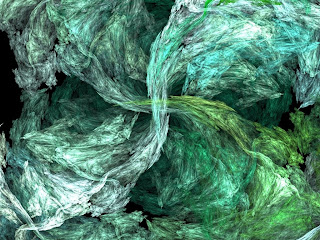
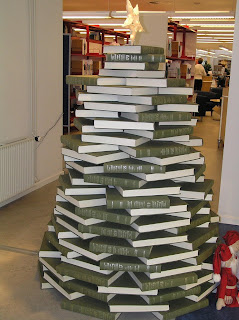

Add a little Christmas cheer to your office desk with this innovative Christmas tree that lights up neon blue. It is made of tough plastic in the shape of a traditional tree with a star on the top, stands at 21cm tall including the base and is battery operated (needs 2 x AA batteries - not supplied) so easy to use. There are two modes to light the tree - either to stay bright blue or you can set it so the light sweeps up and down - cool!
With its wave-like architecture and all, vivocity is a shopping mall that has a one-of-a-kind look. it being singapore’s largest mall, naturally its flagship christmas tree has to be just as unique and majestic, deviating from the usual green or white trees.

decked out in silver and various hues of pink, this shiny tree is made completely out of christmas baubles and lights in alternating layers. say, doesn’t it resemble a giant multi-tiered cake?

i love the way its thick layers of christmas lights come alive at night, looking all magnificent and bright.

Besides the glamorous diamond tree, there’s also another shiny christmas tree that stands tall at bugis junction. this is the flagship tree of the mall, as the diamond tree is actually done up by soo kee jewelry.

this tree doesn’t have a single leaf. instead, it is made out of long narrow strips of shiny foil. it looks very unique! there are life-size pretty angels suspended around it, with gold wings to match.
interestingly, these angels have neither eyes nor mouths!

Photo credit: DuNnO - The Kit Lens Baby
love the bright star on top too, especially when it lights up at night. the multiple strings of christmas lights that rain down around the tree blend in perfectly well.

at night, the silver tree magically turns to gold. nice!

Christmas time is great for those who love to decorate. It's a time to get out all of your holiday decor from years past to create a warm feeling in your home. However, it can be redundant to keep pulling out the same tree, lights and statues every single year.
This year, do something different. You can keep the holiday traditions alive, but spruce up your home with unique Christmas decor, like an upside down Christmas tree. Upside down Christmas trees are festive and make great Christmas gift as well.

